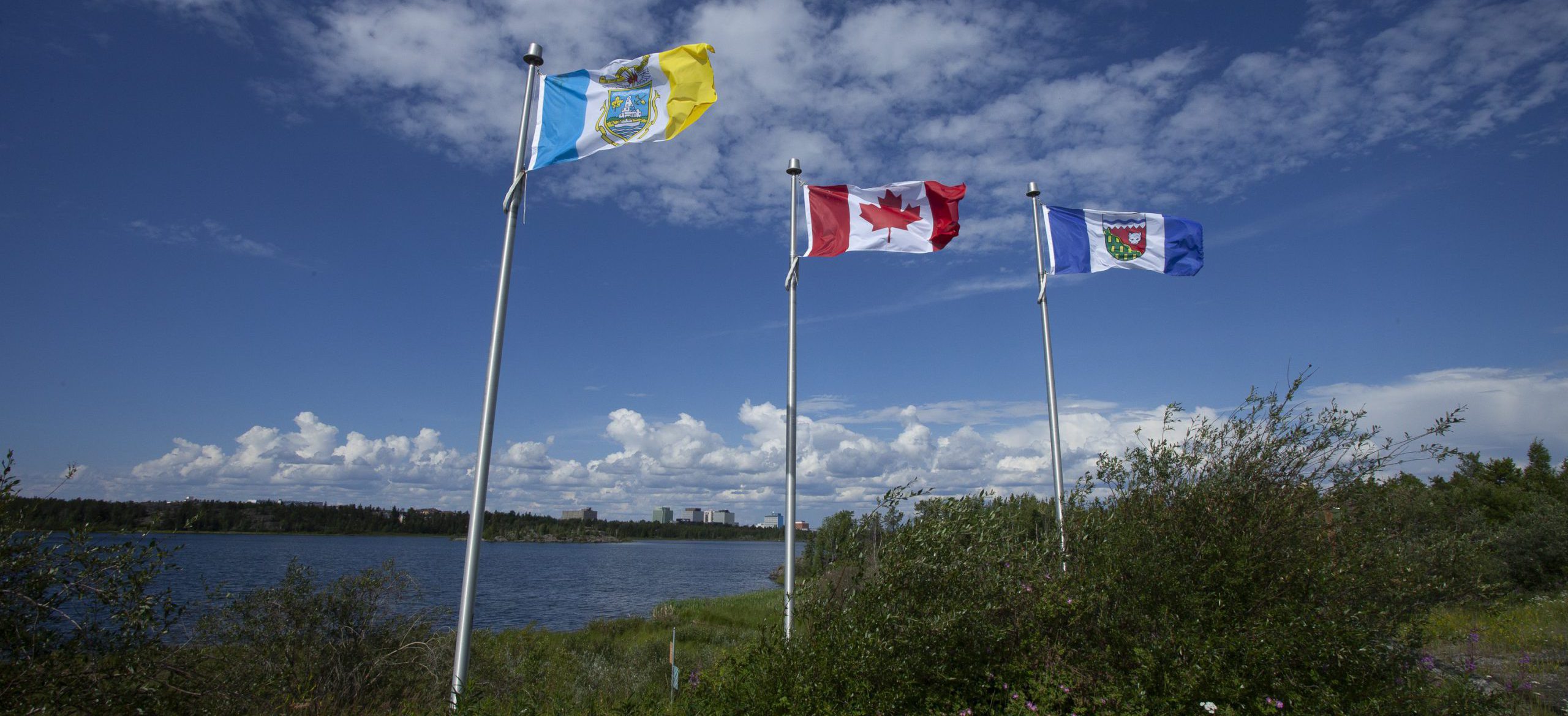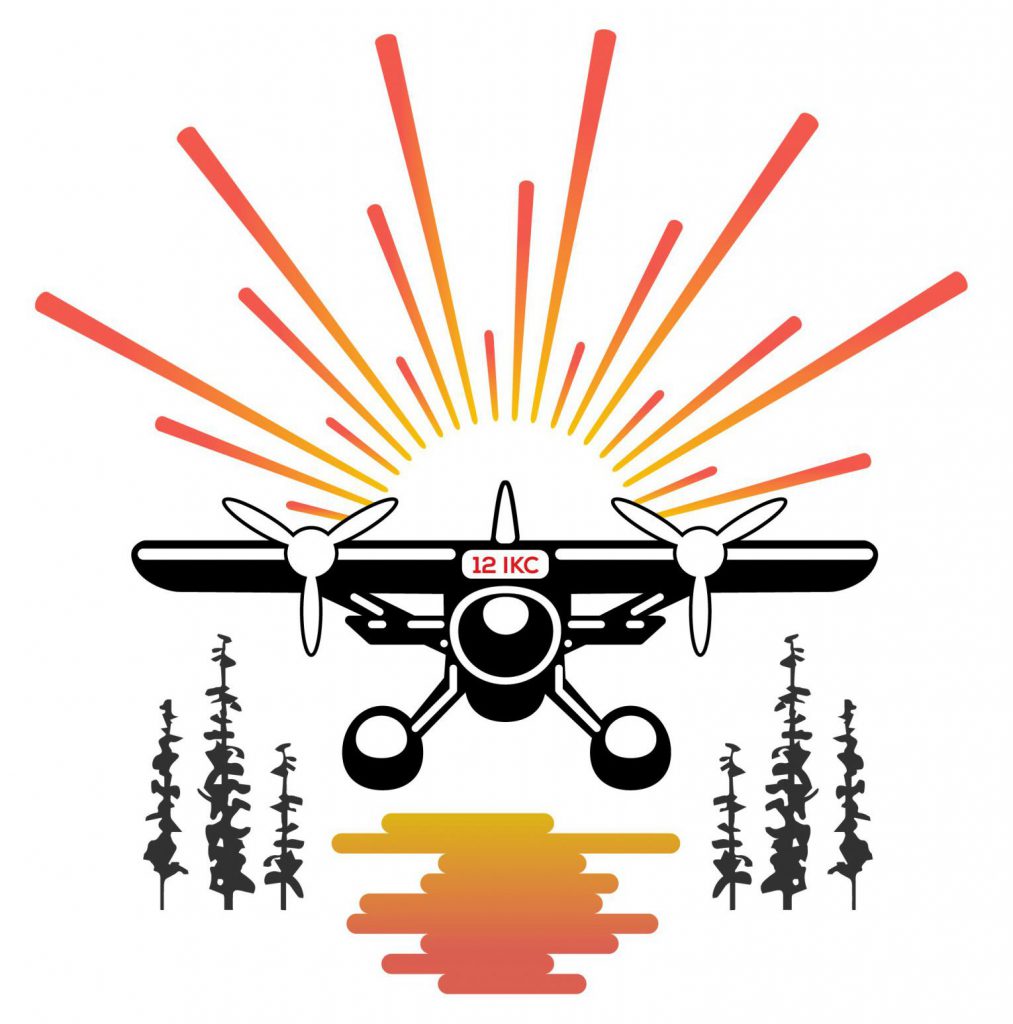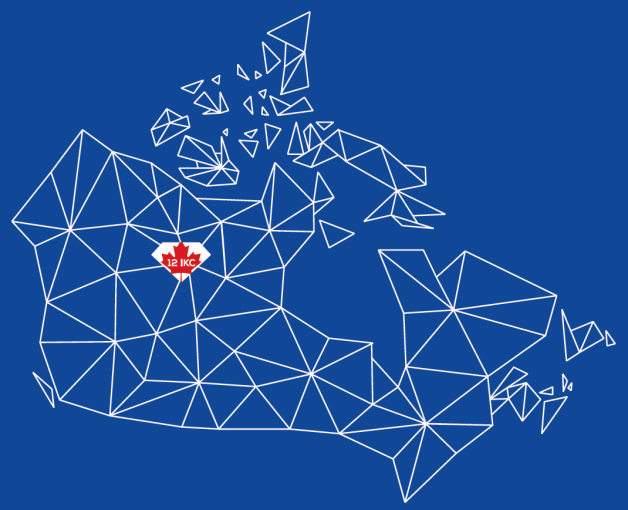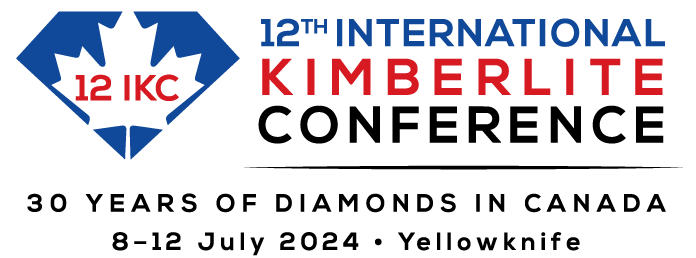Invitation
The Organising Committee extends a warm invitation to all participants of previous kimberlite conferences and potential first time delegates to attend the 12th International Kimberlite Conference which will be held in Yellowknife, Northwest Territories from 8th -12th July 2024.
The location of the 12 IKC is particularly appropriate as Canada has become the third largest producer of diamonds by value after Botswana and Russia. The Northwest Territories is where it started and there are now three operating mines.
The design of the 12 IKC logo has the Canadian emblem, the maple leaf, inside a cut diamond shape to celebrate ‘30 years of Diamonds in Canada‘. Red and white are the official colours of Canada (centre) and also signify kimberlite magma and diamond. The Northwest Territories is where diamonds in Canada started and from its flag (far right), the blue represents the many lakes and rivers and the white represents the winter ice and snow. We are excited to have this logo represent the conference in Yellowknife and the role of diamonds in the Northwest Territories and Canada. The central symbol of the Yellowknife flag (far left) is a representation of the old head frame at the Giant Mine in Yellowknife, which, along with the crossed pick and shovel, refers to the city’s gold mining industry.

The conference will bring together geoscientists from both the academic and exploration/mining communities to share their knowledge, stimulate scientific debate and to further our understanding of the geology of kimberlites, diamonds and related subjects. The conference technical programme will include the usual oral and poster sessions, and for the first time will feature seminars. 12 IKC will also offer a selection of field trips showcasing the Northwest Territories diamond mines. The two adjacent conference hotels, the Explorer and the Chateau Nova, will host all of the technical sessions, maximizing the opportunity for delegates to network with the kimberlite and diamond community. 12 IKC will celebrate 50 Years of International Kimberlite Conferences.
The 12 IKC technical sessions will cover five conference scientific themes, which reflect current and future academic and industrial interest in cratons, kimberlites and diamonds. Also for the first time, 12 IKC will convene two or three Seminars covering emergent or state-of-science topics to help make sense of the tidal wave of new data and related geoscientific models as well as promote the sharing and development of ideas, group learning and active listening.
International Kimberlite Conferences have a proud history of awarding significant financial support, typically for about thirty individuals, primarily students, to attend each conference. The 12 IKC is pleased to continue this tradition.
We, the Convenors, along with the rest of the Organising Committee, look forward to welcoming you to Yellowknife, the capital of Canada’s spectacular Northwest Territories. Our gateway to the Canadian North is on the northern shore of Great Slave Lake, just 400 km south of the Arctic Circle. Here you will enjoy our friendly people and long summer days.
Convenor: John Ketchum
Co-convenors: Pam Strand, Andy Leszczynski

Tindi cleared for takeoff!
Tindi, the 12 IKC mascot, is a Twin Otter, a symbol of the Canadian North and diamond exploration. In fact, twin otters, a specific type of bush plane, were essential to accessing the vast and remote areas of Arctic tundra and thus an important part of the Canadian Diamond Rush.
The Twin Otter is a Canadian utility aircraft capable of landing on short natural ground strips using tundra tires in the summer, on short unnavigated lakes using floats in the summer, and on frozen lakes using wheels/skis in the winter. It was developed in Canada in the mid-1960’s and remains in production today. The Twin Otter quickly became a stalwart of the Canadian Arctic and Sub-Arctic and the backbone of the mining cycle.
Before the Twin Otter, earlier bush planes had already been spurring exploration in the North since 1929, when the first planes arrived and established a new industry. Initially, greater air access supported a gold boom in and around Yellowknife with one gold mine remaining in production until 2004. The Canadian North would look very different today if not for modern aviation.


